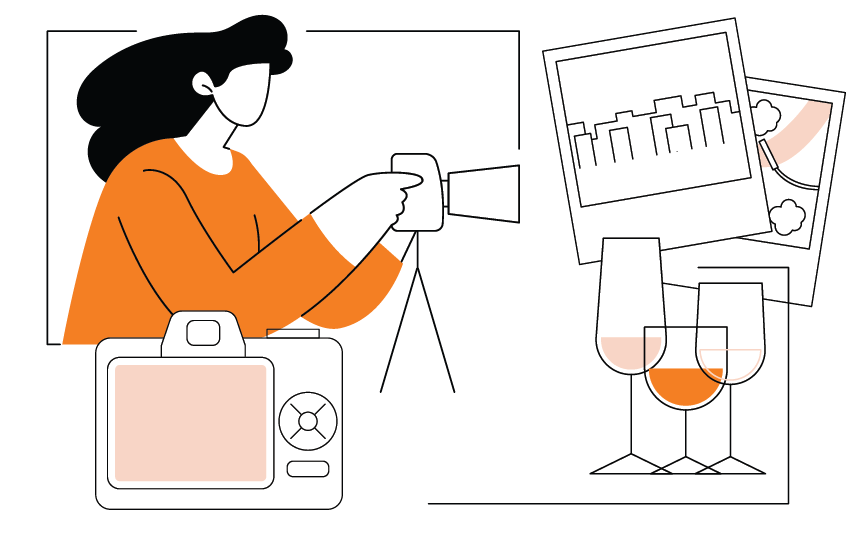From showcasing your creativity in building your brand awareness, exhibiting at a trade show could be the next big move for your company. Trade Shows are a beneficial event marketing tool that allows you to show off your product or service, leverage your competition and engage with your audience. Nothing elevates your brand more than creating a platform to truly engage with potential consumers face to face.
Organizing a trade show exhibit is no easy task and requires a variety of puzzle pieces coming together to create the perfect strategy. It is crucial to have a well thought out plan put into place early for success at the event. To help, we’ve compiled six of our best tips and tricks of the trade to develop a pre-show strategy!
1. Why Are You Here?
We aren’t quite sure if we can say this enough – It’s important to understand the basics before you start anything. Your company’s brand is the key to the show, but you need to be able to answer this question: “What is my purpose for being here?”. Consumers need to instantly know WHO and WHAT you are. They also need to be able to see how you are beneficial to them. Establishing this standard is crucial to keeping the focus on your goals.
2. Set Measurable Goals
Speaking of goals, it is important to understand what you want to achieve from being at a trade show once you know the purpose of your exhibit. Be sure to set goals that are quantifiable and measurable. This can be a specific number of leads, the ROI per event, a percent of the audience reached or a number of closed deals. These goals show the benefits you receive and areas that can be improved to drive further results.
3. Let People Know You’re Here
This trade show will have plenty of attendees, but not every person will walk by or stop at your booth. Make your presence known. Prior to the event, identify your target audience and generate conversations with members of that demographic to get to know your audience. If you have access to an email list for attendees, send emails to those who fit your demo to let them know where your booth will be. Share sneak peeks in your emails to generate interest pre-show. People are more likely to stop by if they have a schedule, so try to set up specific times to meet with valued attendants. It’s also important to take advantage of social media. Use event hashtags and create specific hashtags for the event to target consumers and raise awareness.
4. Design Your Booth
Preparation is an overarching theme throughout the entire trade show strategy process. Planning your booth is no different. The earlier you reserve your spot at the trade show, the better options you have for location. Some trade shows may also offer premium locations with higher traffic counts for an additional charge.
First impressions are everything, so when developing your booth it is vital to have an eye-catching and well-executed design. Keep in mind that the booth is a backdrop for your product or service. It should draw in your audience and instantly portray your brand. Be sure it is open and inviting. For example, having a table across the front can seem closed-off and steer consumers away rather than engaging with them.
After your booth is designed, you can start building and putting it together prior to the show. This makes day-of tasks minimal and allows you to keep your focus on the main goals.
5. Develop a Booth Strategy
Being at the trade show isn’t enough. You may have the best booth there, but unless you have a plan in place for how you will strategically engage with your audience chances are minuscule that you will receive the leads you desire.
A trade show gives a face to your brand so the best, most enthusiastic employees should be working. If they are excited about the product, consumers will be too. These conversations aren’t just about selling, but also getting to know your audience and making a connection. Gaining a better understanding of the demographics and psychographics or your ideal consumer helps the brand move forward. These employees should be trained in what to say and ready to answer frequently asked questions.
Engagement isn’t limited to conversation though. Other ways to further engage with consumers include video, motion graphics and contest promotions. Giveaways can be anything from a pen to a balloon to a bracelet. Giveaways are a representation of your brand and can be used to expand your reach. Executive speaking and product/service demonstrations are other great ways to interact with your audience. These both provide instant credibility for the brand. It can also be beneficial to do a press interview at the booth to generate buzz and draw in more leads.
6. FOLLOW UP
Following up is so important. Prior to the trade show even happening, there should be a post-event follow-up strategy in place. This is how you will nurture your new leads and close deals. Trade shows are great sources of new leads for your company, but also for your competitors. Following up quickly and personally can help set you apart in a crowded marketplace.
Summary
Trade shows are used across so many industries all over the nation because they work. Consumers are able to associate a face and a personal experience with your brand. Exhibiting at a trade show puts you in the mix with your competitors and allows you to interact with potential leads to show why you are the right fit for them.
Think you’re ready to take on a trade show? We’d love to help you design a strategy that works for you. Contact us today for more information!







